Statistical Commentary
Published 5 May 2022
About this release:
This release includes statistics on Challenges made by taxpayers (or their representatives) against the 2010 and 2017 local rating lists up to 31 March 2022. It also includes statistics on reviews of rating assessments (known as “reports”) that have either been initiated by the VOA or a billing authority, when new information becomes available.
Responsible Statistician:
Sam Wild
Statistical enquiries:
Date of next publication:
July 2022
1. Key findings
For England, as of 31 March 2022, the Valuation Office Agency (VOA) had:
-
Registered 646,650 Checks under the Check, Challenge, Appeal (CCA) system.
-
Registered 121,870 Challenges under the Check, Challenge, Appeal (CCA) system. It is estimated that 55,610 of these Challenges were made as a result of Covid-19 restrictions being imposed.
-
In the last quarter to 31 March 2022, 21,590 Checks were registered and as well as an additional 4,760 Challenges.
In addition:
-
638,230 Checks have been resolved.
-
96,500 Challenges have been resolved, an estimated 51,550 relate to Covid-19 restrictions being imposed.
-
13,960 Challenges have also been marked as incomplete. 4,010 relate to Covid-19 restrictions being imposed.
-
In the last quarter to 31 March 2022, 20,810 Checks and 3,950 Challenges were resolved.
-
218,680 Interested Persons (IPs) and 16,760 agents had registered to use the check and challenge service.
-
The VOA have approved 624,500 property claims by businesses.
While the statistics do not include the number of appeals made under CCA, as these are the responsibility of the independent Valuation Tribunal Service (VTS), the VTS publish their latest statistics here.
For Wales, as at 31 March 2022 the VOA had:
- Received 550 Challenges in the last quarter, with 3,120 Challenges being resolved in the same period. 20,100 remain outstanding.
For the 2010 list, covering both England and Wales, the quarterly statistics show that, as at 31 March 2022, there were around 8,700 appeals outstanding, down from 10,950 appeals three months previously. These include those awaiting listing, relisting or decisions from the Valuation Tribunal, which the VOA do not control, and some highly complex cases relating to specialist properties where a longer timeframe is necessary to settle the appeals.
As volumes have reached a sufficiently low level, the VOA has taken the decision to stop producing excel tables on the 2010 list. Figures on outstanding cases will continue to be available through the statistical commentary.
2. Checks, Challenges and Changes against the England 2017 rating list
There has been an increase during the COVID-19 pandemic of interested persons using VOA services which is reflected in the statistics shown in this release.
Before anyone can access more detailed valuation data about a property, they must prove that they have a legal interest in the property under the non-domestic rating legislation, for example as an owner or occupier or both. To do this, they are required to register to use the system and then can ‘claim their property’ through the VOA’s online service by providing proof of their relationship to the property, such as a copy of a business rates or utility bill. Once the VOA confirm the interested person’s relationship to the property, the claim is approved and the interested person is able to view or request the detailed valuation for that property. The interested party can then start the CCA process. More information is available here.
Figure 1: Customer registrations by customer type and month, Apr 2017 to Mar 2022
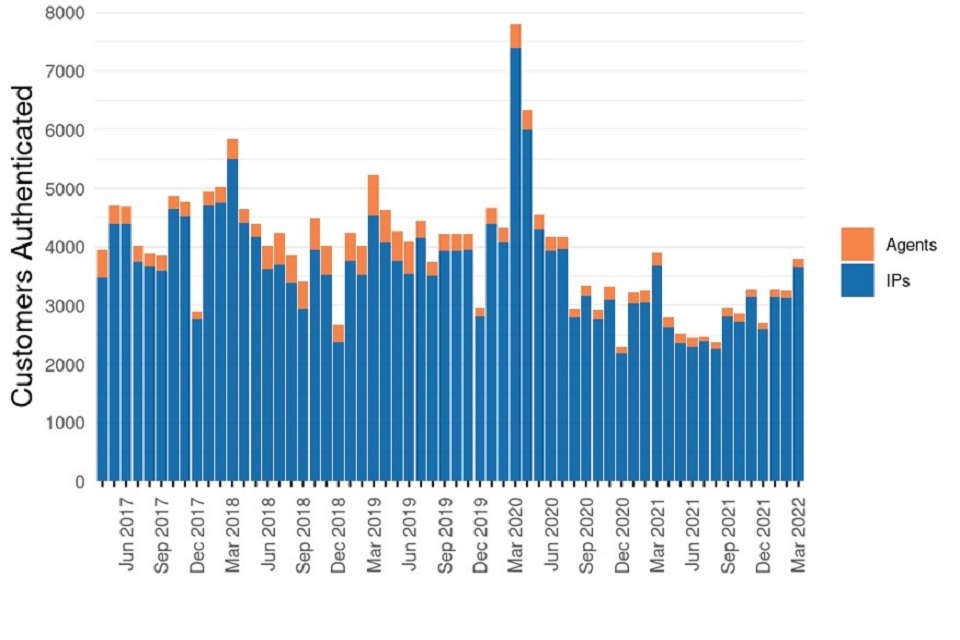
Figure 1: Customer registrations by customer type and month, Apr 2017 to Mar 2022
Source: C&C against the 2017 local rating list, England, Mar 2022 (Table 1.2)
The number of interested persons (IPs) and agents registering for CCA each month is shown in Figure 1. More than 90% of registrations are from interested persons rather than agents. Increases seen in March and April 2020 is a spike attributable to the COVID-19 pandemic.
Figure 2: Approved property claims by month, Apr 2017 to Mar 2022

Figure 2: Approved property claims by month, Apr 2017 to Mar 2022
Source: C&C against the 2017 local rating list, England, Mar 2022 (Table 1.3)
The number of approved property claims by month is shown in Figure 2. May and June 2020 are the months with the highest number of approved claims. The lag from the peak shown in Figure 1 reflects the time taken from a customer registering for CCA to then claiming a property and having their claim approved by a Valuation Officer.
Figure 3: Checks against the England 2017 NDR List by case status and month, Apr 2017 to Mar 2022
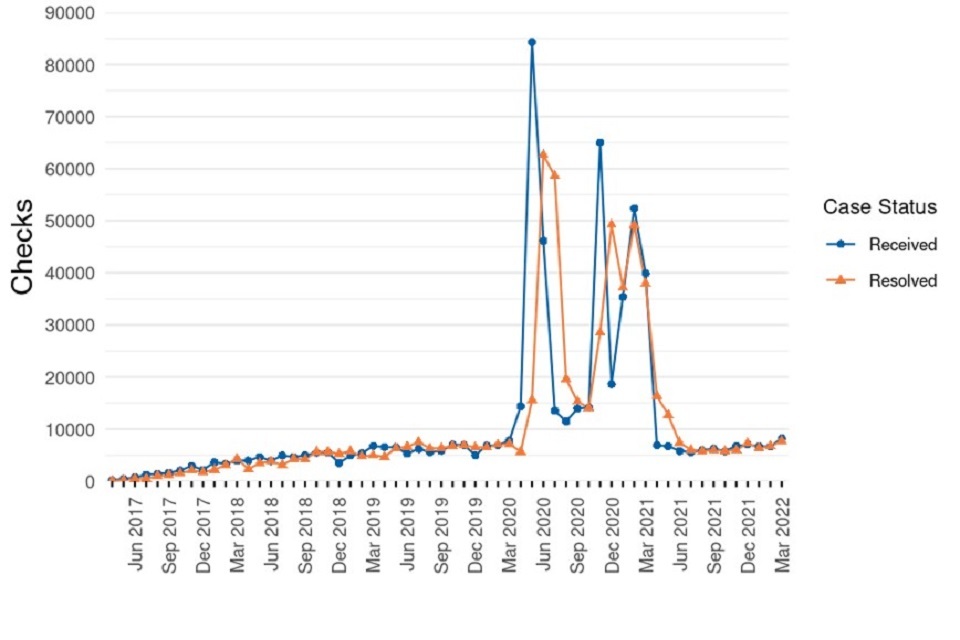
Figure 3: Checks against the England 2017 NDR List by case status and month, Apr 2017 to Mar 2022
Source: C&C against the 2017 local rating list, England, Mar 2022 (Table 2.1.-2.2)
Figure 3 shows the number of Checks received by month and case status. The 21,590 Checks received in the quarter to 31 March 2022 is 3% of the total received since the start of the list in April 2017. The three spikes are assumed to be attributable to the COVID-19 pandemic and were coincident with government-imposed restrictions on business.
Figure 4: Challenges against the England 2017 NDR List by case status and month, Apr 2017 to Mar 2022
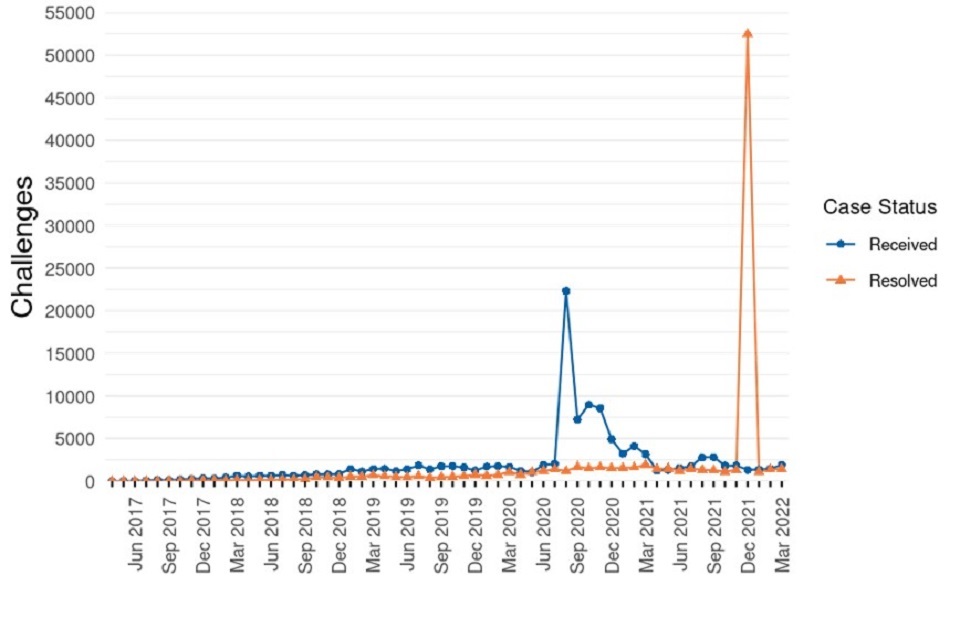
Figure 4: Challenges against the England 2017 NDR List by case status and month, Apr 2017 to Mar 2022
Source: C&C against the 2017 local rating list, England, Mar 2022 (Table 2.1-2.2)
Figure 4 shows the number of CCA Challenges received by month and case status. August 2020 saw the highest amount of Challenges received in a single month by the VOA and is a consequence of the previous rise seen in Checks (figure 3) attributable to the COVID-19 pandemic.
December 2021 saw the highest amount of Challenges resolved in a single month by the VOA and is due to Covid-19 Challenges being resolved on bulk. This is discussed in more detail in the section on Covid-19 Challenges
Figure 5: RV change outcome by CCA case type the England 2017 NDR List, Apr 2017 to Mar 2022

Figure 5: RV change outcome by CCA case type the England 2017 NDR List, Apr 2017 to Mar 2022
Source: C&C against the 2017 local rating list, England, Mar 2022 (Table 3.1)
Figure 5 shows a percentage breakdown for RV change outcome by CCA case type.
Figure 6: Resolved CCA Checks by region and outcome the England 2017 NDR List, Apr 2017 to Mar 2022
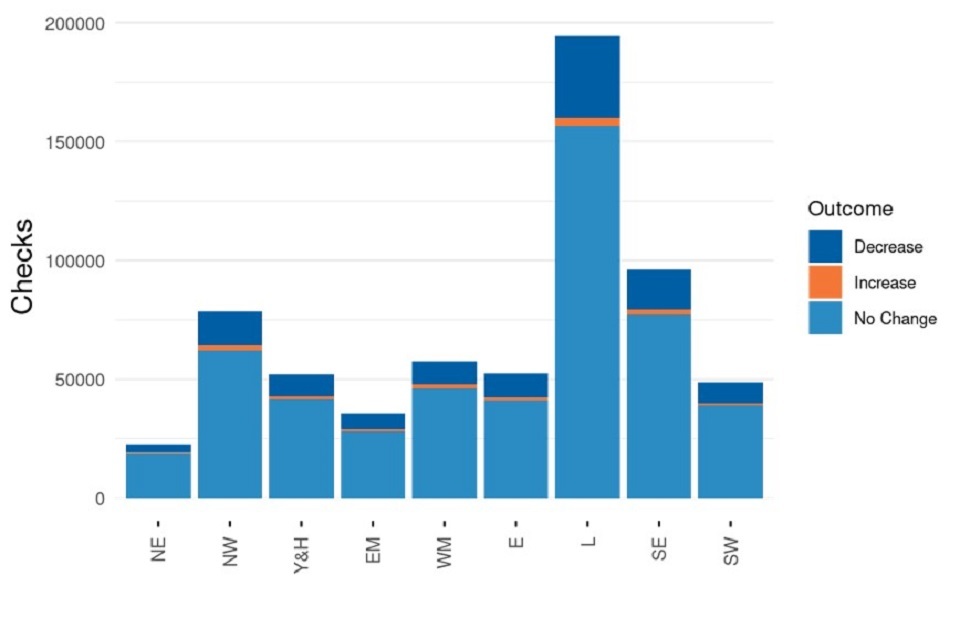
Figure 6: Resolved CCA Checks by region and outcome the England 2017 NDR List, Apr 2017 to Mar 2022
Source: C&C against the 2017 local rating list, England, Mar 2022 (Table 3.1)
Figure 6 shows the number of resolved CCA Check cases by geographical region and their outcome.
Figure 7: Resolved CCA Challenges by region and outcome the England 2017 NDR List, Apr 2017 to Mar 2022
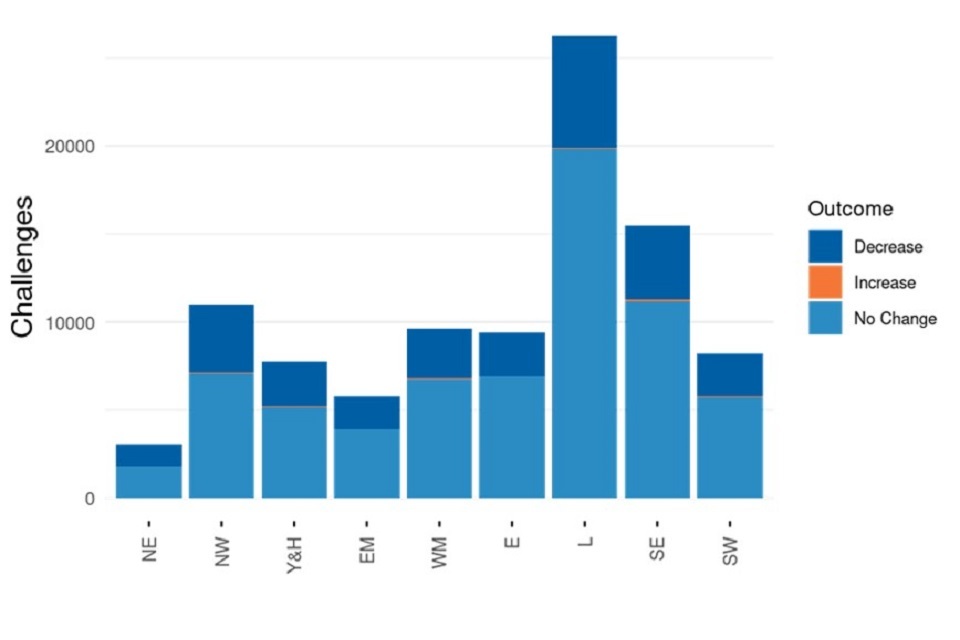
Figure 7: Resolved CCA Challenges by region and outcome the England 2017 NDR List, Apr 2017 to Mar 2022
Source: C&C against the 2017 local rating list, England, Mar 2022 (Table 3.1)
Figure 7 shows the number of resolved CCA Challenge cases by geographical region and their outcome.
Figure 8: Resolved CCA Appeals by region and outcome the England 2017 NDR List, Apr 2017 to Mar 2022

Figure 8: Resolved CCA Appeals by region and outcome the England 2017 NDR List, Apr 2017 to Mar 2022
Source: C&C against the 2017 local rating list, England, Mar 2022 (Table 3.1)
Figure 8 shows the number of resolved CCA Appeal cases by geographical region and their outcome.
Figure 9: Assessment Reviews against the England 2017 List by case status and quarter, Apr to Jun 17-18 to Jan to Mar 21-22
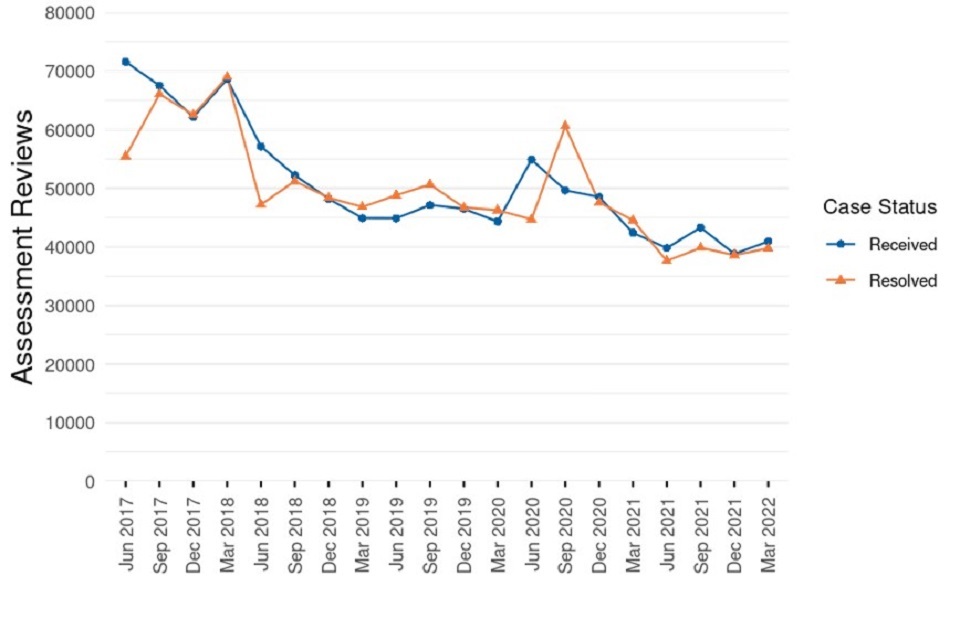
Figure 9: Assessment Reviews against the England 2017 List by case status and quarter, Apr to Jun 17-18 to Jan to Mar 21-22
Source: C&C against the 2017 local rating list, England, Mar 2022 (Table 4.1 – 4.2)
Figure 9 shows that the number of assessment reviews received and resolved against the England 2017 list have continued to decline in the quarter to 31 March 2022.
3. Challenges as a result of the Covid-19 pandemic; 2017 rating list
Throughout the COVID-19 pandemic VOA received an increased number of Checks and Challenges.
It was assumed that the increase in number of Checks received between March 2020 and March 2021 (shown in figure 3) were as a result of COVID-19 restrictions. The Check stage of CCA is a fact checking stage, the detail around whether the case is a result of COVID-19 restrictions is not recorded. This means it is not possible to determine the precise number of COVID-19 related Checks.
Considering the average number of Checks registered each month prior to the COVID-19 pandemic, it is estimated that possibly over three quarters of Checks registered over this period were as a result of COVID-19 restrictions.
On 25 March 2021, the government announced that measures brought in as a result of coronavirus, which affect the occupation of property, will not be considered a Material Change of Circumstances (MCC) for the purposes of business rates valuations in the 2017 rating list in England. The Welsh Government also decided that this legislation should apply in Wales. More information is available here.
From April 2021, the number of Checks returned to pre-pandemic levels.
Figure 10: Covid-19 Challenges as a result of the Covid-19 pandemic, breakdown by case status and month, England 2017 List

Figure 10: Covid-19 Challenges as a result of the Covid-19 pandemic, breakdown by case status and month, England 2017 List
Source: Covid-19 Challenges against the 2017 local rating list, England, March 2022 (VOA administrative data)
Additional information is recorded once a case reaches the Challenge stage of CCA, this includes if the Challenge was as a result of COVID-19 restrictions. Figure 10 shows the number of CCA Challenges received by month and case status, where the challenge was a result of COVID-19 restrictions.
Between March 2020 and March 2022, VOA received 55,610 challenges in England as a result of COVID-19 restrictions. This represents over 60% of all challenges received during this time period.
The Government introduced The Rating (Coronavirus) and Directors Disqualification (Dissolved Companies) Bill to the House of Commons on 12 May 2021. This became law on 15 December 2021. The legislation sets out, with retrospective effect, that direct and indirect matters attributable to coronavirus are not to be considered in respect of determinations to alter 2017 rating lists in England. The VOA has issued decision notices for all remaining Challenge cases in England relating to coronavirus measures. This resulted in 51,440 Challenges being resolved in December 2021, the highest number of Challenges resolved in a single month. These cases were resolved as ‘Disagreed’ with no change in rateable value. From January 2022 to March 2022 a further 60 were resolved as “Disagreed”. The remaining 4,050 Challenges were either withdrawn before January 2022 or had been marked as incomplete as they did not contain all of the detail required in legislation and so were not accepted by the VOA.
In Wales, approximately 16,490 challenges relating to COVID-19 restrictions were received between March 2020 and March 2022. Following the introduction of Royal Assent of the Rating (Coronavirus) and Directors Disqualification (Dissolved Companies) Bill, VOA in Wales are contacting ratepayers and asking them to withdraw their cases. As of March 2022, 2,670 of these challenges have been withdrawn.
4. Challenges and Changes against the Wales 2017 rating list
Figure 11: Challenges against the Wales 2017 NDR List by case status and quarter, Apr to Jun 17-18 until Jan to Mar 21-22
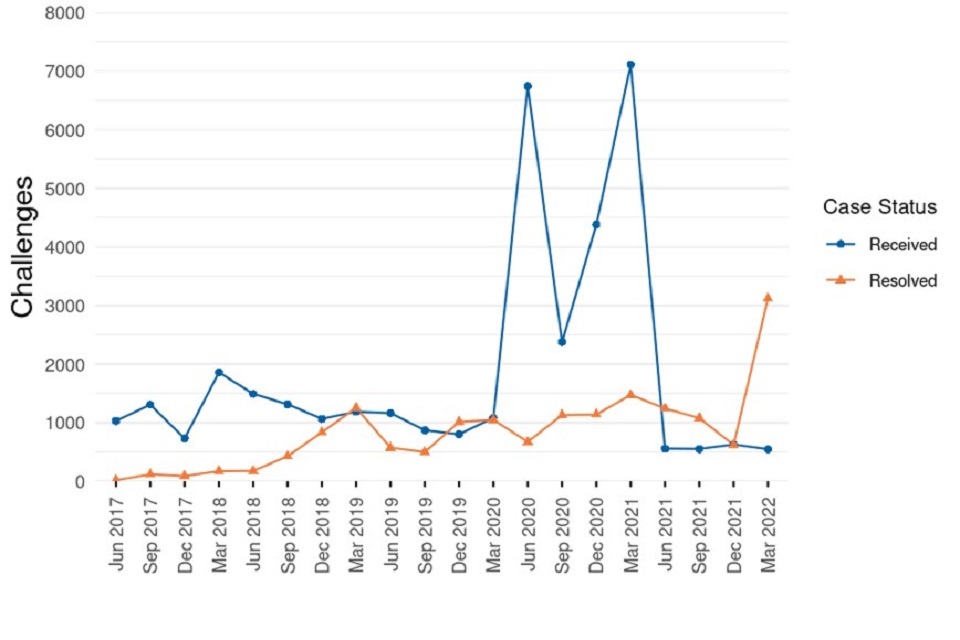
Figure 11: Challenges against the Wales 2017 NDR List by case status and quarter, Apr to Jun 17-18 until Jan to Mar 21-22
Source: C&C against the 2017 local rating list, Wales, Mar 2022 (Table 1.1 – 1.2)
Figure 11 shows that the number of challenges received against the Wales 2017 list was the joint lowest on record in the quarter to 31 March 2022. Challenges resolved in the quarter was the highest to date following the application of the Rating (Coronavirus) and Directors Disqualification (Dissolved Companies) Bill. The Act states that measures brought in as a result of coronavirus will not be considered a Material Change of Circumstances (MCC). This means that Challenges in England and Wales based on the effect of these measures will not see a change in rateable value.
Unlike England however, these cases were resolved as ‘withdrawn’ but still had no change in rateable value.
Figure 12: Assessment Reviews against the Wales 2017 List by case status and quarter, Apr to Jun 17-18 until Jan to Mar 21-22
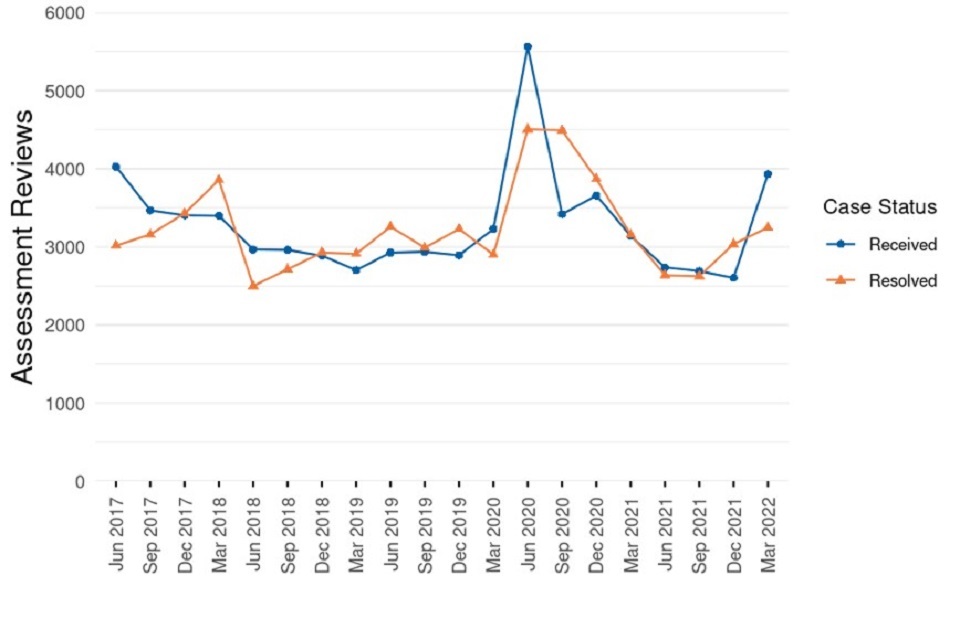
Figure 12: Assessment Reviews against the Wales 2017 List by case status and quarter, Apr to Jun 17-18 until Jan to Mar 21-22
Source: C&C against the 2017 local rating list, Wales, Mar 2022 (Table 3.1 – 3.2)
Figure 12 shows that the number of assessment reviews received against the Wales 2017 list was the third highest on record in the quarter to 31 March 2022. Assessment reviews resolved also had an increase in the same period.
5. Background notes
This release includes statistics on challenges made by taxpayers (or their representatives) against the 2017 local rating list. It also includes statistics on reviews of rating assessments (known as reports) that have either been initiated by the VOA or a billing authority, when new information becomes available. Previous quarters’ figures include retrospective changes so will not necessarily be the same as those from previous publications.
Figures in the release note may be rounded to a different level of accuracy from the figures in the MS Excel tables and should therefore be considered more definitive.
The statistics are derived from VOA’s administrative database and are published at national, regional and billing authority level.
The VOA is required, by the Local Government Finance Act 1988, to compile and maintain accurate rating lists specifying a rateable value for all non-domestic rateable properties in England and Wales. These rateable values provide the basis for national non-domestic rates bills, which are issued by billing authorities. There is a local rating list for each billing authority. However, for simplicity, we have referred to these throughout this publication as one combined ‘rating list’ for those local lists effective from 1 April 2010, and, likewise, one combined ‘rating list’ for those local rating lists effective from 1 April 2017.
Ratepayers, owners, and in limited circumstances, relevant authorities and other persons (known formally as Interested Persons) can make a challenge to alter the rating list if they think an entry is incorrect. Challenges can also be made on behalf of interested persons by their professional representatives.
The process for challenging the rating list currently differs between England and Wales. In Wales a challenge, known as a proposal, is made to the Valuation Officer asking them to change the entry in the rating list. After a period of discussion if the Valuation Officer cannot reach agreement with the ratepayer the matter will then be referred to the Valuation Tribunal Service, at which stage it becomes an appeal. In England a new three stage appeals system was introduced in 2017, called Check, Challenge, Appeal (CCA).
More information about CCA can be found in the Background Information document.
6. Further information
More detailed information on the 2017 local rating list is available on the Agency’s website at the following location: http://www.gov.uk/correct-your-business-rates
Further information on the area codes used in this release please refer to the ONS’s website at the following location: https://www.ons.gov.uk/methodology/geography/geographicalproducts/namescodesandlookups/namesandcodeslistings
Timings of future releases are regularly placed on the VOA research and statistics calendar.
We will keep under review the format of this summary document to improve the presentation of our statistics and welcome feedback from users on the usefulness of the information provided in this summary. Please forward any comments to the statistics@voa.gov.uk.
